Albert Einstein is remembered for his mastery of complex scientific theory, but in many ways, it was his passion for simplicity that set him apart from other intellects.
With Einstein’s dictum firmly in mind, that “everything should be made as simple as possible, but not simpler”, we consider the nation’s present economic situation, and draw two clear and simple conclusions: firstly, that the only positive, long-term trajectory for Zambia is to increase the size of the economy, and thus the number of taxpayers. Secondly, that this can be achieved by breaking with a certain line of thinking, namely that more taxes can only be achieved through higher taxes.
The Basics
The Gross Domestic Product (GDP) of a nation is the total value of goods and services produced within its economy in a single year. Zambia’s economy – its GDP – was worth $25.7 billion in 2017. This does not tell us anything about the quality of life in a country per se, but it indicates the size of the pie. GDP is a common means of measuring economic growth – for example the percentage growth in GDP in a given year – and for making broad international comparisons. As will become relevant, it is also the yardstick by which one measures the size of a country’s national debt.
Both production and consumption within the economy are taxed by the Government, through income tax, VAT, and the like. This tax revenue forms the government’s budget in the same way as salary income forms a household budget. With it, the government delivers public services. Health, policing, education and infrastructure provision are among the most important public goods provided by governments. They are not simply a social benefit, but also a form of investment in the future productive capacity of the economy – a healthier, safer, better educated workforce is a more productive one. Importantly, if the economy grows, the government derives more taxes and can deliver more services.
Sensible expenditure by governments can create value, but overspending can be ruinous. Every household knows this. Debts incurred must be paid back with interest, further reducing the disposable income that the household has left to pay for groceries, education and healthcare. As with a household, so with a government.

Zambia’s household finances are not in good shape, as the government has consistently overspent. The difference between revenue earned (through tax) and the amount spent is termed a fiscal deficit. Zambia’s fiscal deficit is now worth more than 8 percent of its GDP, and has been more than 5% for the last 5 years running. Its total gross external debt – the amount it owes to creditors – has increased from around 20% of GDP in 2011 to 65.5% this year. In 2017, it only paid $815 million towards servicing the debt, leaving $1.32 billion still to be paid, an amount that will escalate to $1.74 billion by the end of 2018. To pay back the debt, the government is drawing down its ‘International Reserves’ account – hard currency that it keeps in case of unexpected financial shocks.
What’s the problem with debt?
Debt itself is not a problem if creditors believe that you can pay it back. Problems arise when you start struggling to pay. Creditors lose confidence, as they have recently in Zambia. Zambia’s Eurobonds – external bonds denominated in dollars rather than kwacha – were the worst performing Eurobonds globally during the first half of 2018. And, as confidence drains, and risk premiums increase, the debt becomes more expensive to service. In 2017, one in every six kwacha the government earned was spent on simply paying off the interest on its bonds. Even more will have to be spent this year.
What are the options?
At this point, governments have a choice. They can either chop up the credit cards as a clear, visible display of commitment to fiscal discipline, or they can take out other loans to pay the interest on their existing ones, creating a debt trap.
Another tempting option is to raise taxes on every productive sector of the economy. Yet, whilst this may generate short-term cash to cover this year’s interest payments, the future costs far outweigh the short-term high of a tax binge. Why is that? Because all economic activity requires investment – whether that is building factories, or replacing stock – and all investment requires a level of risk acceptance. Squeezing an already-narrow tax base does not encourage businesses or individuals to take those risks. Sudden policy shifts, especially those perceived to result from fiscal irresponsibility, deter the necessary investment the economy requires for future growth.
And, with reduced investment and economic activity, comes less taxes in the future, and yet more borrowing to make up the shortfall, until – once again – there is the prospect of default, when the nation cannot meet its financial obligations.
Sudden policy shifts, especially those perceived to result from fiscal irresponsibility, deter the necessary investment the economy requires for future growth
What could have been?
It need not have been this way.
Zambia is structurally copper-dependent. Its copper exports in 2016 were worth $4.45 billion, 80 percent of total exports. Despite this – or perhaps because of it – the mining industry has seen more policy instability than any other sector since 2012. Indeed, there are few mining jurisdictions in the world that could compete in this respect. This has had a major negative effect on investment. Had a different approach been taken, Zambia’s finances would now be in a far better position.
Creating an appropriate tax regime for the industry is not an easy task. Commodity prices are inherently cyclical, and governments can be drawn into playing catch-up.
When commodity prices are high, governments tend to overspend in expectation of being able to fund that expenditure with commodity rents. This is often what leads to a debt trap in the first place. To fund the growing deficit, they tend to increase mineral royalty taxes (MRT). But, invariably, by the time this is implemented, the price has fallen again, leaving companies with high tax bills. Higher tax bills then leave companies with less income to spend on exploration growth and productive capacity, which in turn means they (and host governments) are not able to take full advantage of the following price upswing. And so, the cycle continues.
Figure 1 below illustrates the cyclicality of copper prices over the last three years.

Source: IMF, https://www.imf.org/external/np/res/commod/index.aspx, accessed 20 September 2018.
Constant changes to tax regimes – the Zambian tax regime has changed nine times in the last fifteen years – can inadvertently result in lower revenues over the long run, as unpredictability continually undermines existing productivity and deters new investment. To use a driving analogy, the industry is never really able to get out of second gear.
Figures from the industry suggest that had the taxation and regulatory regime stayed stable from 2012 onwards, production levels could feasibly have reached 1.099 million tonnes by 2018, instead of the 791,000 tonnes achieved last year.
Taking MRT alone, this would have generated an additional $132 million in government revenue for 2018; the government will earn $340 million, whereas it could feasibly have earned $472 million.
And MRT is only one, relatively small part of what has been foregone. Duties from additional imports, always especially high in the construction phase; additional corporate income tax; PAYE from additional employment; VAT, and a myriad of other charges upon the inputs and outputs from mining operations. And, this does not encompass the spin-offs throughout the economy that occur from investment, through supply chains. Kansanshi, for instance has a multiplier effect of five, which means that for every one job created directly through the mine, another five are created elsewhere in the economy.
The precise numbers are immaterial; a quick mental exercise will tell you that the revenue that could have been achieved, simply by creating the right conditions for investment to occur, would have alleviated in whole or in large part the debt repayment position the country is now in.
Source: Author calculations, based on Wood Mackenzie figures, 2018.
The way out?
Zambia’s governments have always had to face hard decisions. A distressingly high percentage of the country’s population still lives in extreme poverty, especially in rural areas, and this is despite very high annual GDP growth of 6.7% during the 2004-2014 period. The needs are indeed great, but if they are greater than the revenue available to pay for them, what then is the solution? As is clear, incurring excessive debt is not the answer. Neither is excessively taxing the country’s small tax base.
A true visionary thinks less about ‘what is’, and more about ‘what could be’. The present is an economy disproportionately dependent on copper. The future could be a growing, inclusive economy that has successfully utilised the excellence of its copper industry as a flywheel to spur growth in other sectors, thereby lessening resource dependence and boosting government revenues.
Starting with fiscal consolidation, then creating the right conditions for attracting investment, in mining and elsewhere throughout the economy, and rapidly improving bureaucratic effectiveness (paying VAT rebates timeously, for instance) is the route to a better future.
Or, in the timeless words of Francis of Assisi, “start by doing what is necessary; then do what is possible; and suddenly you are doing the impossible.”
See also: Why Zambia’s mining pipeline matters for diversification.

























